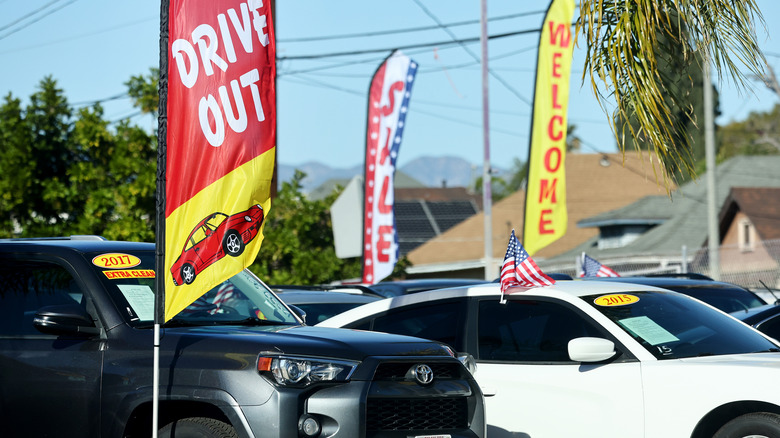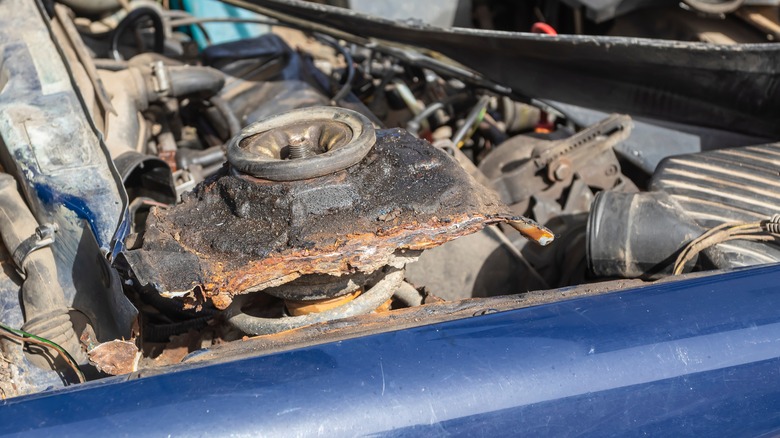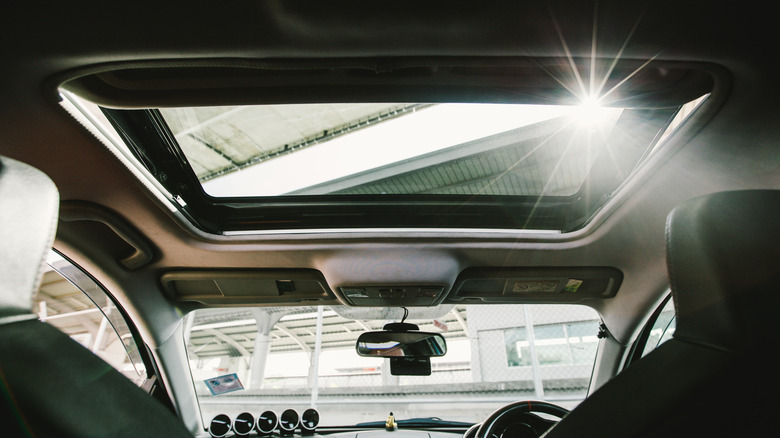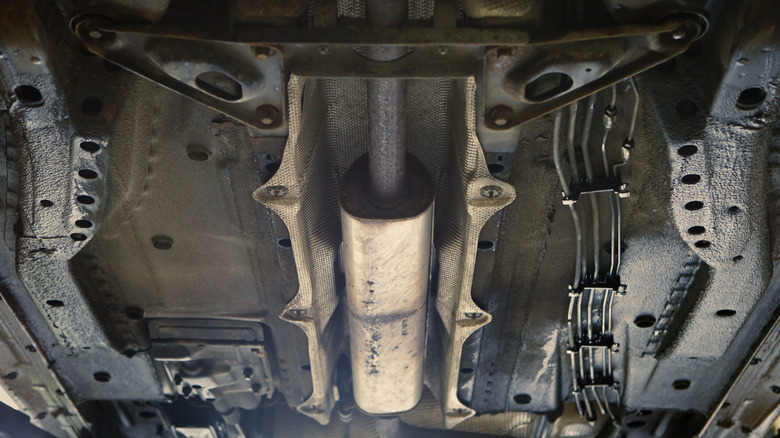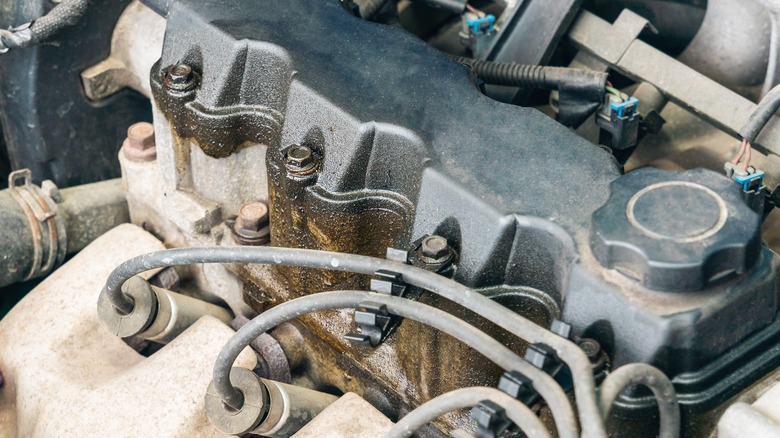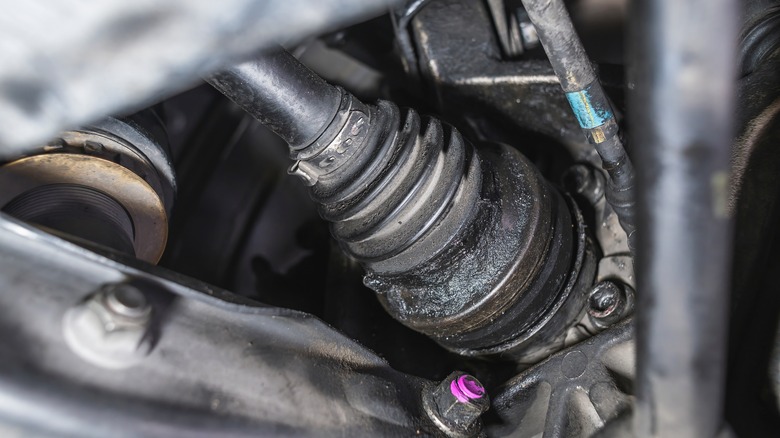5 Mechanic-Approved Tips For Buying A Used Car
Buying a used car can be like walking blindfolded into the ocean — it's hard to know if you're going to be able to float along peacefully or if you're about to be eaten by sharks. This is true whether you're buying from a private party or used car dealer, but there are a few things you can do before trading money for keys and a title that can help ensure you're getting a bargain and not a rotting lemon. In my 53 years, I have only owned three new cars: a 1994 Mazda Protégé and two early 2000s Volkswagen's. All of the other dozen or so vehicles I have purchased were at least 15 years old and had upwards of 100,000 miles on the odometer.
Several of those were classic Jeeps bought with an awareness of known issues and the intention to restore them to their former glory, but most of those older vehicles were purchased to use as daily drivers. My confidence in buying older vehicles comes from my training and experience as an auto mechanic, a job I held for a few years spanning my '20s and '30s. Since then, I have continued to work on my own cars and those of friends, and I operated a mobile auto repair business for a few years as a side gig. Drawing from that experience, I offer you these tips to keep in mind when buying a used car.
Look for rust in critical areas
A big enemy of older cars is rust. A little surface rust is to be expected on older cars, but the oxidation of metal components can lead to costly repairs down the line, especially in certain spots. There are several ways to protect a car from rust, but slowing rust in progress or repairing existing rust damage is more difficult. Floor pans and rocker panels (the area beneath a car's doors) are especially prone to damage from rust. Pull up floor mats and peel carpeting back from the door sills and footwells if possible to check for hidden rust in those locations.
Be especially mindful of obvious signs of rust repair: body filler around the fender wells, welded-in replacement floor or trunk panels, and mismatched paint. Carefully inspect the mounting points for the car's shocks and struts, which are different in design but perform the same function. These locations are prone to rust on many vehicles and usually require significant cutting, fabrication, and welding to repair properly. Floor or trunk pans are a simpler repair, but still require some welding. Inspect these locations from the inside of the car, and crawl underneath and check from below. If any of these spots are rusted through, it's probably best to walk away and find another vehicle.
Check for signs of water leaks
Rusted shock towers and body panels aren't the only places you should check for water damage when looking at a used car. Inspect the rubber seals around the doors, windows, trunk/hatchback, and sunroof if present. Sunroof drains can become clogged with leaves and dirt and back up with rainwater that leaks into the passenger compartment. The weatherstripping in all of these locations is subject to dry rot over time, which also leads to water leaks. A careful visual inspection should reveal places where the weather sealing has deteriorated to the point where it no longer works adequately, but there's a simple and thorough test you can do that only costs a few dollars.
If the seller permits it, take the car through a car wash and inspect the area around the doors, windows, and trunk or hatchback lid for water intrusion. Water leaks can lead to mold growth under the carpet, which is potentially hazardous to your health. Mold cleanup and carpet replacement is a tedious and potentially expensive job as well.
Inspect the frame for cracks or other damage
Before you even take a test drive in a car you're looking at, crawl underneath and inspect the frame for signs of damage. If you see any visible cracks, bid the seller good luck and farewell. You should also look for signs of prior repairs like welded-in frame segments, patch panels, or seams. Bring along a tape measure and check to see if the frame is square all around. Some surface rust is usually ok, but poke any rusty spots with a screwdriver or pocket knife to make sure the frame isn't rotted through.
A bent frame can be a sign that a car has been in a previous accident, and frame repairs can be tricky and expensive. You should also be wary of a frame that looks too clean; fresh paint or coating can be a way to mask damage or previous repairs.
Look high and low for signs of oil and coolant leaks
There are a few places on and around a car's engine you should check for coolant and oil leaks, both of which can lead to costly repairs down the road. Pay particular attention to valve covers (shown in the photo above) and head gaskets, where the cylinder heads meet the engine block. You can usually identify an oil leak by the accumulation of grime where oil is escaping from a mating surface. Oil pans and rear main seals (where the back of the crankshaft connects to the transmission) are also common points where oil can leak from the engine. Rear main seal repairs are especially costly, usually requiring the removal of the engine or transmission.
Carefully inspect the radiator hoses, thermostat housing, and overflow reservoir for coolant leaks, which can lead to catastrophic damage from an overheated engine. There are two paths you can take if you discover a potentially problematic oil or coolant leak. You can try and estimate the cost of repairing the issue and negotiate a reduction in price, or simply find another potential purchase without these looming headaches.
Check the axles and brakes for wear
Another critical area you'll want to inspect carefully is a car's axles and brake components. If possible, jack up the car and grab each wheel at nine and three o'clock and try to wiggle the wheel back and forth. Repeat the test with your hands at 12 and six o'clock. Any excess play can indicate worn wheel bearings, tie rod ends, or other suspension components. Any of these conditions can be potentially dangerous; if a wheel bearing seizes, the wheel can come off the car at high speed.
At the very least, worn ball joints or tie rod ends will affect your ability to steer a car precisely, and ball joint failure can also result in the dangerous loss of a wheel. You should visually inspect the rubber boots around the tie rod ends, ball joints, and constant velocity joints for damage which can lead to the loss of lubricating grease and failure of these parts. Like with oil leaks, escaping grease will accumulate road dirt and other debris, making leaks easier to spot.
If possible, remove the wheels and check for wear on the brake pads and rotors. Have the seller or a friend push the brake pedal while you inspect the calipers to make sure they're moving freely in both directions and check for leaks at the wheel cylinders. Brake repairs aren't especially expensive, but poorly functioning brakes are dangerous and can be a sign that the vehicle has been neglected.
